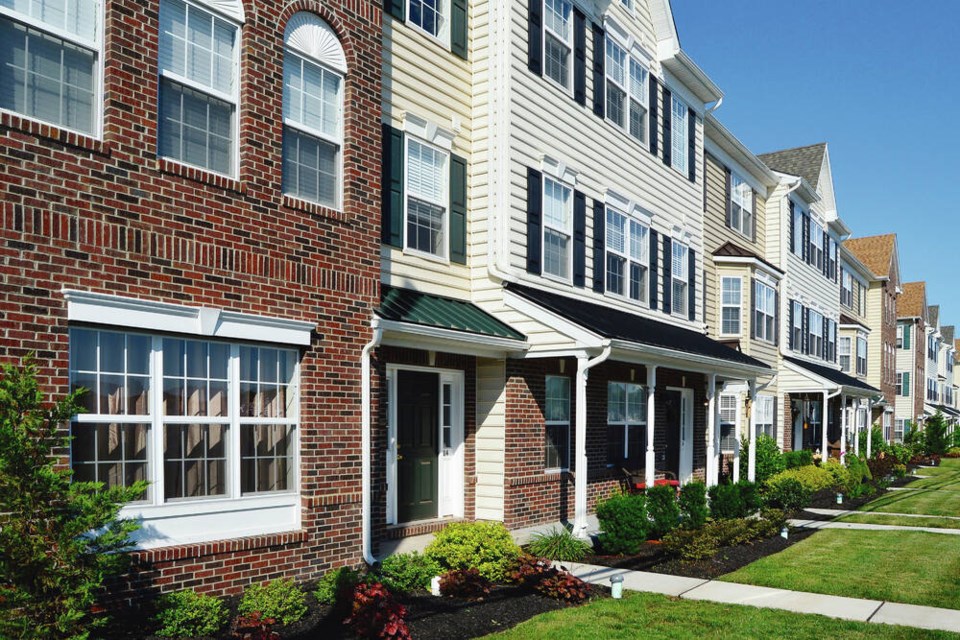When researchers set out to examine how urban spaces enhance the health and abundance of pollinators in Toronto, they found city areas with the most pavement, roads and concrete and the highest building density had the fewest bumblebee colonies.
What surprised them, however, was that areas with single-family homes and lower-density housing such as townhomes and rowhouses had more bees. Foraging distances were shorter than in areas with high-density multi-level buildings, and bees could survive.
“The type of urbanization seems to matter,” says Sheila Colla, one of the researchers. “If there are no city parks or watershed forests, those urban areas with a higher density of single- or multiple-family houses that would typically have front and backyards seem to provide better foraging opportunities for bumblebees.”
Colla says it’s “increasingly important” to design cities in a manner that sustains and enhances biodiversity and ecosystem services.
Victoria and surrounding municipalities can learn from this. The push over the last couple of years has been to increase density and the supply of affordable homes so that all rampaging humans seeking the Canadian dream — life without real winter on Vancouver Island — can live that dream.
Those are worthy goals.
But so are maintaining the natural values and services that keep communities healthy and functioning and make the Canadian dream attractive. These include parks and playing fields for recreation, spaces for viable farms and community gardens, and street trees and green spaces that support pollinators — including bumble, honey and other bees — vegetation, birds and other forms of biodiversity.
Diversity of spaces and life supports the many natural values and services trumpeted in recent years — local food sources, diversity of employment, flood protection and reduced erosion, and natural cooling during heat waves. It provides those services for free.
Living here would be far more unaffordable if we had to pay for those services out of pocket.
A UBC study shows young kids who live near such areas do better socially, learn better, and score higher on other developmental milestones.
Urban green spaces and biodiversity also improve the mental and physical health for locals — lowering social services costs.
Municipal officials must consider many values when they decide on projects, and priorities shift. In 2019, local municipalities declared climate emergencies. Food security, the opioid crisis and homelessness each experienced brief moments at the top of the pile. Affordable housing now headlines.
We fool ourselves if we believe housing in the region will be truly affordable again. The area’s market rates have been a stretch for most families for more than a decade, and the “below-market rates” promised by developers never approach affordable.
People live in hope, of course.
But in recent decades, the experiences of other rapidly expanding cities in North America have shown that increasing supply to meet demand to such an extent that prices drop is a vision.
Mirage-like, it beckons from the horizon and is always out of reach. Just as the region’s homelessness issue will never completely resolve as long as provinces to the east solve their own extensive homelessness issues by shipping the people trying to survive on their streets to B.C., the number of would-be Canadian-dream seekers is also inexhaustible.
Demand for housing in British Columbia will continue to outstrip supply, even as the number of homes grows exponentially. The latest census figures from Statistics Canada show growth in the number of homes was higher than the increase in population countrywide, yet our housing supply still lags.
We live on an island. That means built-in constraints on the available physical space and natural functional capacity to fit and support the millions of Canadians and others who would move here if they could, if we are also to provide for and maintain food security, mental health, healthy kids and healthy ecosystems.
The only thing that would make the affordability vision real is a deep enduring crisis that makes the area more unattractive than even an astronomical cost of living could — something like a decade-long, global economic collapse or a series of major earthquakes that level the region, destroy its infrastructure and scare people away.
And nobody wants that.
I have no desire to live in a museum, nor am I resistant to change. However, as a community and a region, we need to think about how we, as communities and regions, will maintain critical natural values and services, as well as meet immediate community needs over the next 50 to 70 years — well beyond the next election cycle.
The conversations need to happen now.



